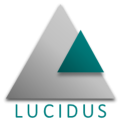
6.Introduction
This is the sixth in a series of articles brought to you by Robert White - CEO of Lucidus Ltd dealing with the subject of 'Value' in the sales process.
In this installment, we discuss the processes and skills you will need in order to effectively make use of value based sales.
Review
Back in out discussion of Symptoms and Causes we identified three basic hurdles to be overcome;
- unidentified value
- tools
- process and skills.
We dealt with unidentified value in the identifying value section, and Tools in the Tools section. Now we will discus Process and Skills.
Processes and Skills
The final hurdle comes in the form of process and skills.
I've described the traditional approach as the value assault - let me tell you about us, our products and how great they would be for you. It isn't very effective in today's complex marketplace. The customer remains both unconvinced and all alone regarding the many complex issues they have to resolve - and in this context the vendor may well be perceived as self seeking, uncaring or simply opportunistic.
What many customers really want is some form of collaboration between them and the vendor so that they can pool their expertise to achieve a better result for all. The trick for the vendor though is to avoid ending up in the clutches of purchasing and/or providing free consulting.
Unfortunately, customers are much better at ensuring traditionally equipped sales people end up in purchasing than salespeople are at avoiding the traps.
Summary of Causes
So let's draw these causal strands together in a summary and if we think in terms of our optimal decision process we can test the customer and vendor against the three headings of
- Decision (is there a good process),
- Value (can value be properly articulated and understood) and;
- Change (is the customer willing to change and to what extent does the vendor help with these difficult issues).
If we take the customer first, we can say that generally there is not a good decision-making process at work. The customer will find it difficult to measure vendor value, both pre and post sales, and they will find it difficult to change - remembering that no change; no value.
For the vendor, we can say that generally the sales process is vendor focused; there's no mechanism that will engender collaboration so the customer does not own the process. Since most of the value is still to be quantified and there is no compelling means to articulate it, the customer will not own the numbers. And since most vendors avoid the issue of change the customer will not own the vendor proclaimed outcome and will not have sufficient incentives to invest and change.
So what we have here are of two sub-optimal processes that should be integrated but sadly meet at only one single place of mutual understanding - and that place is price.
So that's our view of the underlying causes, lets now have a look at solutions.
Next
In the next part we will discuss the Lucidus solution to Value.

